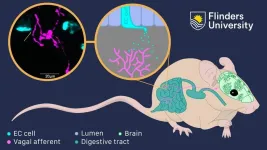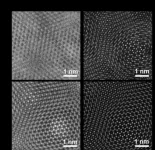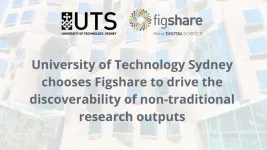(Press-News.org) The mechanisms by which antidepressants and other emotion-focused medications work could be reconsidered due to an important new breakthrough in the understanding of how the gut communicates with the brain.
New research led by Flinders University has uncovered major developments in understanding how the gut communicates with the brain, which could have a profound impact on the make-up and use of medications such as antidepressants.
“The gut-brain axis consists of complex bidirectional neural communication pathway between the brain and the gut, which links emotional and cognitive centres of the brain,” says Professor Nick Spencer from the College of Medicine and Public Health.
“As part of the gut-brain axis, vagal sensory nerves relay a variety of signals from the gut to the brain that play an important role in mental health and wellbeing.
“The mechanisms by which vagal sensory nerve endings in the gut wall are activated has been a major mystery but remains of great interest to medical science and potential treatments for mental health and wellbeing.”
Serotonin is a major hormone and neurotransmitter in the body and has been shown to play a major role in a range of bodily functions, including mental health and depression.
“The vast majority of serotonin is made in the gut in specialised cells, called enteroendocrine cells (EECs), within the gut wall but we still don’t understand how serotonin released from EECs activates the sensory nerve endings of the vagus nerve,” says Professor Spencer.
“It had once been proposed that EECs make physical synaptic connections with the sensory nerve endings of the vagus and use fast neurotransmitters to activate vagal sensory endings.
“However, the results of our new research uncover that any substances (including serotonin) released from EEC cells must communicate via a process of diffusion to the sensory nerve endings of the vagus nerve, that lie in colon (large intestine).
“We found that the distances between individual EECs that contain serotonin and vagal afferent nerve endings were too far apart to occur via a mechanism that involved synaptic communication and fast neurotransmission, as was previously thought.
“This is a major discovery for our understanding of gut-brain communication which has profound implications for drug developments, treatments of anxiety and depression and other digestive problems such as irritable bowel symptom (IBS), all of which involve serotonin in some way.
“It opens a whole new way of thinking and scientific enquiry for future drug development and investigation for control of the gut-brain axis and potential treatments for mental health and wellbeing, for instance the use of selective serotonin reuptake inhibitors (SSRIs), a widely used type of antidepressant,” he says.
“The majority of serotonin in the body, around 95%, originates in the gut, so there is great interest in how such large quantities of serotonin released from EEC cells act on the vagal sensory nerve endings in the gut wall.
“Understanding this mechanism can provide major new clues as to how serotonin not only communicates along the gut-brain axis, but how this serotonin may be involved in the control of health and wellbeing,” he says.
“Up until now, how different substances (like serotonin) released from EECs activated vagal nerve endings in the gut has been unresolved. Recent literature suggests that that this communication occurred through physical connections known as synapses, and that EEC cells form very close junctions with vagal sensory endings.
“Our findings show that any substances released from EECs must act via diffusion onto vagal sensory nerve endings in the colon, which then relay sensory information to the brain,” says Professor Spencer.
Synaptic transmission is the process by which neurotransmitters communicate with a target cell or cells, for example another neuron(s) or muscle cell(s), via a specialised structure known as the synapse. This involves the neurotransmitter molecules crossing a very short distance to their target cell(s).
Diffusion is the net movement of molecules from one region to another that can occur over any distance.
The researchers used an intricate method of anterograde neuronal tracing from the sensory nerve cell bodies of the vagus nerve, which lie just outside the brain, but send their long nerve projections (axons) all the way down to the small intestine and proximal part of the colon.
“The mean distances between vagal nerve endings and the nearest serotonin containing EECs were hundreds of times greater than known distances that underlie synaptic transmission in vertebrates. This rules out any possible mechanism of fast synaptic transmission,” says Professor Spencer.
“The absence of any close physical contacts between serotonin-containing EECs and vagal nerve endings in our studies leads to the inescapable conclusion that the mechanism by which serotonin activates the sensory nerve endings of the vagus nerve is by diffusion.
“What the findings confirm is that substances released from EECs must communicate via diffusion to activate vagal sensory nerve endings.
“Our understanding of how the gut communicates with the brain, via sensory nerves has been substantially improved based on the findings of this study, and we look forward to exploring this topic further,” he adds.
The paper, Identification of vagal afferents nerve endings in the mouse colon and their spatial relationship with enterochromaffin cells by Nicholas J. Spencer, Melinda Kyloh, Lee Travis and Tim Hibberd was published in Cell and Tissue Research. DOI : 10.1007/s00441-024-03879-6
END
Gut-brain communication turned on its axis
New research led by Flinders University has uncovered major developments in understanding how the gut communicates with the brain
2024-02-27
ELSE PRESS RELEASES FROM THIS DATE:
NSF and DOE establish a Research Coordination Network dedicated to enhancing privacy research
2024-02-27
In response to the rapidly evolving landscape of data collection and analysis driven by advances in artificial intelligence, the U.S. National Science Foundation (NSF) and the U.S. Department of Energy (DOE) have established a Research Coordination Network (RCN) dedicated to advancing privacy research and the development, deployment and scaling of privacy enhancing technologies (PETs). Fulfilling a mandate from the "Executive Order on the Safe, Secure, and Trustworthy Development and Use of Artificial Intelligence," the initiative advances the recommendations in the National Strategy to Advance ...
Want to encourage allyship? Highlight its appreciation, research shows
2024-02-27
Allyship — the practice of relatively advantaged group members acting with the intention to support, advocate and improve circumstances for relatively disadvantaged groups — is critical to promoting more inclusive and equitable organizations.
Not only are advantaged group members typically received more favorably within an organization than disadvantaged group members would be when they speak out against injustice, their allyship can improve disadvantaged group members’ psychological experience in the organization. For instance, men are more likely to believe other men, compared with women, when they confront sexism. And Black Americans report higher levels of self-esteem ...
UM School of Medicine awarded $3.5 million in federal funding to expand medical countermeasures program
2024-02-26
University of Maryland School of Medicine (UMSOM) Dean Mark T. Gladwin, MD, announced today that UMSOM faculty scientists have been selected as key contractors by the Biomedical Advanced Research and Development Authority (BARDA), for the federal agency’s Radiation Nuclear Animal Model Development program. The $3.5 million award that Erika Davies, PhD, Assistant Professor of Radiation Oncology, received to develop Acute Radiation Syndrome Animal Models, has a $16 million potential total. The Division of Translational Radiation Sciences (DTRS), within the Department of Radiation Oncology, will support this project.
Dr. Davies and her colleagues ...
Reimagining electron microscopy: Bringing high-end resolution to lower-cost microscopes
2024-02-26
Researchers at the University of Illinois at Urbana-Champaign have shown for the first time that expensive aberration-corrected microscopes are no longer required to achieve record-breaking microscopic resolution.
The field of microscopy is in the middle of a great revolution. Since the 1800s and the invention of the compound light microscope, there have only been a few major jumps in resolution to see different length scales: from bacteria and cells, to viruses and proteins, and even down to single atoms. Generally, ...
ACP recommends ways to better meet the health care and social needs of unhoused populations
2024-02-26
@Annalsofim
Below please find summaries of new articles that will be published in the next issue of Annals of Internal Medicine. The summaries are not intended to substitute for the full articles as a source of information. This information is under strict embargo and by taking it into possession, media representatives are committing to the terms of the embargo not only on their own behalf, but also on behalf of the organization they represent.
----------------------------
1. ACP Recommends Ways to Better Meet the Health Care ...
University of Technology Sydney chooses Figshare to drive the discoverability of non-traditional research outputs
2024-02-26
Figshare, a leading provider of institutional repository infrastructure that supports open research, is pleased to announce that the University of Technology Sydney (UTS) has chosen Figshare to support them in sharing, showcasing and managing their research reports and non-traditional research outputs.
UTS – Australia’s leading technology university – will use its Figshare repository and its integration with the Australian Research Data Commons Datacite DOI minting service to drive the discoverability and increase the impact of their research reports and non-traditional research outputs, ...
Five grand challenges for the future at the interface of engineering and medicine
2024-02-26
BIRMINGHAM, Ala. – Just imagine this, the creation of:
An artificially intelligent machine that acts as a human exocortex, a system that will interface with and make an old brain tick normally.
Human cells that can sense metastatic cancer or the boundaries of solid tumors and respond with killing of tumor cells, release of inflammatory payloads or bioluminescence to help guide surgical removal.
Manufactured vaccines that prevent or impede a cancer, block opioid action or reverse autoimmune diseases like multiple sclerosis.
These are a few of the far-reaching ideas put forward by 50 international biomedical engineering ...
Australian researcher's journey from kangaroo whisperer to global dance sensation
2024-02-26
Dr Weliton Menário Costa, a PhD graduate from The Australian National University (ANU), has been announced the overall winner of the 2024 global Dance Your PhD contest after wowing judges with his wickedly creative and quirky dance submission, ‘Kangaroo Time (Club Edit)’.
One of the world's leading researchers in kangaroo behaviour, he is the first person from ANU to win the Dance Your PhD competition, and just the fourth person from an Australian institution to do so since its inception in 2008.
Better known as ‘WELI’, the singer-songwriter, creator and biologist weaves together a funky beat, original songwriting, drag queens and Brazilian funk dancers ...
Black carbon sensor could fill massive monitoring gaps
2024-02-26
Black carbon is the most dangerous air pollutant you’ve never heard of. Its two main sources, diesel exhaust and wood smoke from wildfires and household heating, produce ultrafine air particles that are up to 25 times more of a health hazard per unit compared to other types of particulate matter. Despite its danger, black carbon is understudied due to a lack of monitoring equipment. Regulatory-standard sensors are wildly expensive to deploy and maintain, resulting in sparse coverage in regions infamous for poor air quality, such as the greater Salt Lake City metropolitan area in Utah.
A University of Utah-led study found that the AethLabs ...
UC Irvine advances stem cell research with $4 million CIRM grant for shared resources lab
2024-02-26
Irvine, Calif., Feb. 26, 2024 — The University of California, Irvine has received a five-year, $4 million grant from the California Institute for Regenerative Medicine to establish a shared resources lab in the Sue & Bill Gross Stem Cell Research Center. The facility will offer essential technologies and training for the development of novel in vitro stem cell-based modeling that will serve researchers across the campus and the state.
“Stem cells possess the potential to transform into particular cell types, offering promising avenues for rejuvenating and restoring tissues harmed by injury or affected ...
LAST 30 PRESS RELEASES:
Eye for trouble: Automated counting for chromosome issues under the microscope
The vast majority of US rivers lack any protections from human activities, new research finds
Ultrasound-responsive in situ antigen "nanocatchers" open a new paradigm for personalized tumor immunotherapy
Environmental “superbugs” in our rivers and soils: new one health review warns of growing antimicrobial resistance crisis
Triple threat in greenhouse farming: how heavy metals, microplastics, and antibiotic resistance genes unite to challenge sustainable food production
Earthworms turn manure into a powerful tool against antibiotic resistance
AI turns water into an early warning network for hidden biological pollutants
Hidden hotspots on “green” plastics: biodegradable and conventional plastics shape very different antibiotic resistance risks in river microbiomes
Engineered biochar enzyme system clears toxic phenolic acids and restores pepper seed germination in continuous cropping soils
Retail therapy fail? Online shopping linked to stress, says study
How well-meaning allies can increase stress for marginalized people
Commercially viable biomanufacturing: designer yeast turns sugar into lucrative chemical 3-HP
Control valve discovered in gut’s plumbing system
George Mason University leads phase 2 clinical trial for pill to help maintain weight loss after GLP-1s
Hop to it: research from Shedd Aquarium tracks conch movement to set new conservation guidance
Weight loss drugs and bariatric surgery improve the body’s fat ‘balance:’ study
The Age of Fishes began with mass death
TB harnesses part of immune defense system to cause infection
Important new source of oxidation in the atmosphere found
A tug-of-war explains a decades-old question about how bacteria swim
Strengthened immune defense against cancer
Engineering the development of the pancreas
The Journal of Nuclear Medicine ahead-of-print tip sheet: Jan. 9, 2026
Mount Sinai researchers help create largest immune cell atlas of bone marrow in multiple myeloma patients
Why it is so hard to get started on an unpleasant task: Scientists identify a “motivation brake”
Body composition changes after bariatric surgery or treatment with GLP-1 receptor agonists
Targeted regulation of abortion providers laws and pregnancies conceived through fertility treatment
Press registration is now open for the 2026 ACMG Annual Clinical Genetics Meeting
Understanding sex-based differences and the role of bone morphogenetic protein signaling in Alzheimer’s disease
Breakthrough in thin-film electrolytes pushes solid oxide fuel cells forward
[Press-News.org] Gut-brain communication turned on its axisNew research led by Flinders University has uncovered major developments in understanding how the gut communicates with the brain





